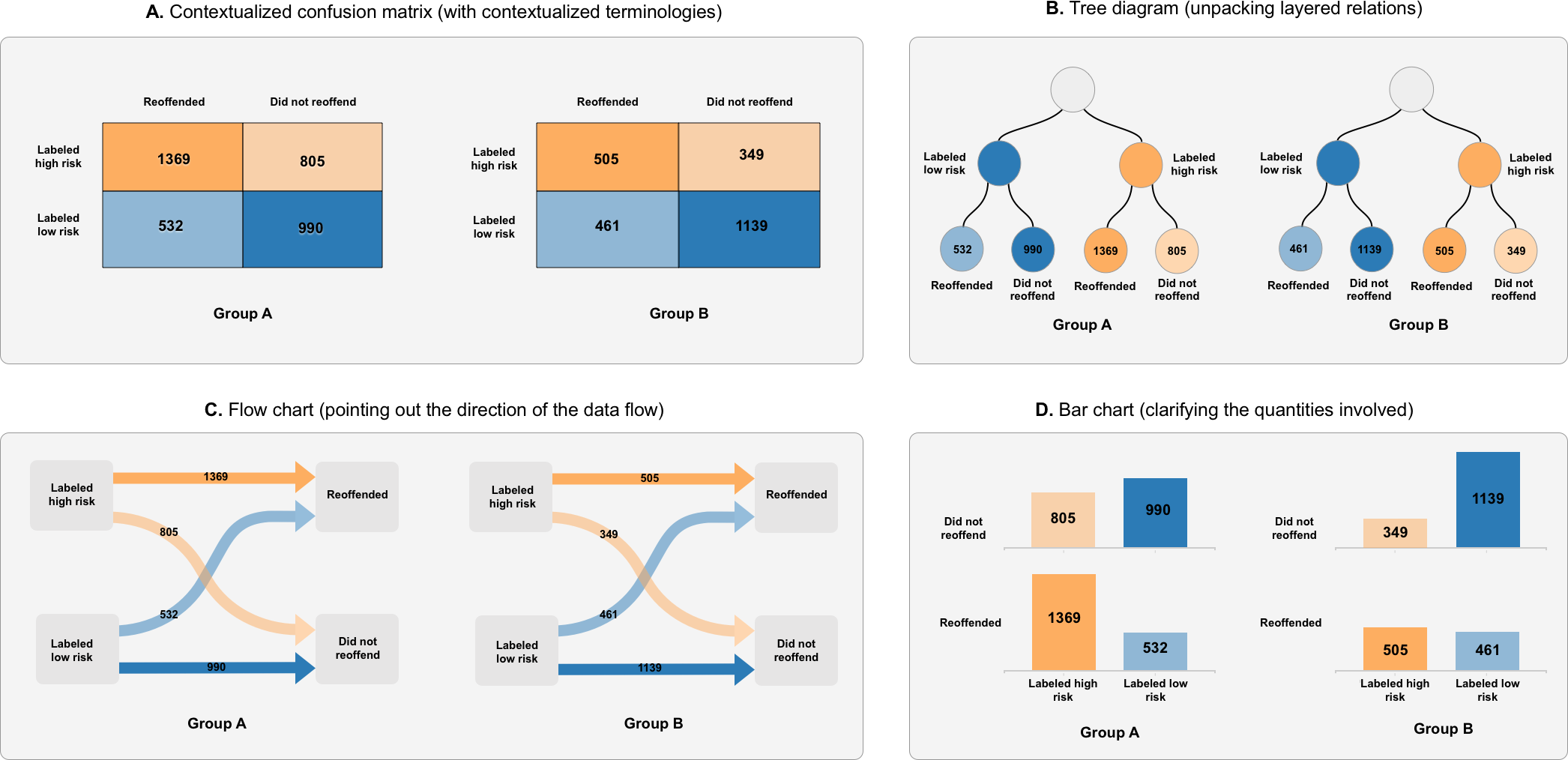Ángel Alex ander Cabrera
Designing Alternative Representations of Confusion Matrices to Support Non-Expert Public Understanding of Algorithm Performance

Ensuring effective public understanding of algorithmic decisions that are powered by machine learning techniques has become an urgent task with the increasing deployment of AI systems into our society. In this work, we present a concrete step toward this goal by redesigning confusion matrices for binary classification to support non-experts in understanding the performance of machine learning models. Through interviews (n=7) and a survey (n=102), we mapped out two major sets of challenges lay people have in understanding standard confusion matrices: the general terminologies and the matrix design. We further identified three sub-challenges regarding the matrix design, namely, confusion about the direction of reading the data, layered relations and quantities involved. We then conducted an online experiment with 483 participants to evaluate how effective a series of alternative representations target each of those challenges in the context of an algorithm for making recidivism predictions. We developed three levels of questions to evaluate users' objective understanding. We assessed the effectiveness of our alternatives for accuracy in answering those questions, completion time, and subjective understanding. Our results suggest that (1) only by contextualizing terminologies can we significantly improve users' understanding and (2) flow charts, which help point out the direction of reading the data, were most useful in improving objective understanding. Our findings set the stage for developing more intuitive and generally understandable representations of the performance of machine learning models.
Citation
Designing Alternative Representations of Confusion Matrices to Support Non-Expert Public Understanding of Algorithm PerformanceHong Shen, Haojian Jin, Ángel Alexander Cabrera, Adam Perer, Haiyi Zhu, Jason I. Hong
ACM Conference on Computer-Supported Cooperative Work and Social Computing (CSCW). Virtual, 2020.
BibTex
@article{shen2020confusion,author = {Shen, Hong and Jin, Haojian and Cabrera, '{A}ngel Alexander and Perer, Adam and Zhu, Haiyi and Hong, Jason I.},title = {Designing Alternative Representations of Confusion Matrices to Support Non-Expert Public Understanding of Algorithm Performance},year = {2020},issue_date = {October 2020},publisher = {Association for Computing Machinery},address = {New York, NY, USA},volume = {4},number = {CSCW2},url = {https://doi.org/10.1145/3415224},doi = {10.1145/3415224},journal = {Proc. ACM Hum.-Comput. Interact.},month = {oct},articleno = {153},numpages = {22}}